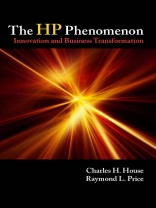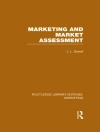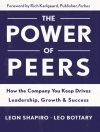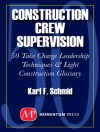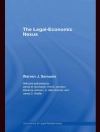The HP Phenomenon tells the story of how Hewlett-Packard innovated and transformed itself six times while most of its competitors were unable to make even one significant transformation. It describes those transformations, how they started, how they prevailed, and how the challenges along the way were overcome—reinforcing David Packard’s observation that ’change and conflict are the only real constants.’ The book also details the philosophies, practices, and organizational principles that enabled this unprecedented sequence of innovations and transformations. In so doing, the authors capture the elusive ’spirit of innovation’ required to fuel growth and transformation in all companies: innovation that is customer-centered, contribution-driven, and growth-focused.
The corporate ethos described in this book—with its emphasis on bottom-up innovation and sufficient flexibility to see results brought to the marketplace and brought alive inside the company—is radically different from current management ’best practice.’ Thus, while primarily a history of Hewlett-Packard, The HP Phenomenon also holds profound lessons for engineers, managers, and organizational leaders hoping to transform their own organizations.
’At last! The ’HP Way, that most famous of all corporate philosophies, has taken on an almost mythical status. But how did it really work? How did it make Hewlett-Packard the fastest growing, most admired, large company of the last half-century? Now, two important figures in HP’s history, Chuck House and Raymond Price, have finally given us the whole story. The HP Phenomenon is the book we’ve been waiting for: the definitive treatise on how Bill and Dave ran their legendary company, day to day and year to year. It should be a core text for generations of young entrepreneurs and managers, a roadmap to building a great enterprise.’—Michael S. Malone, author of Bill & Dave: How Hewlett and Packard Built the World’s Greatest Company
Om författaren
Charles (Chuck) House is Chancellor of Cogswell College. House is deeply involved with questions of technology’s effect on society, particularly distance learning and collaboration using multi-mediated Web networking. Previously, he served as Executive Director for Media X, and Senior Research Scholar in the Human Sciences and Technologies Advanced Research Institute at Stanford University, and he led the Research Collaboratory and served as director of Societal Impact of Technology for Intel Corporation. House has also held executive management positions at Dialogic, Spectron Microsystems, Veritas, Informix, and Hewlett-Packard. Raymond L. Price is the Professor and Severns Chair for Human Behavior in Engineering at the University of Illinois at Urbana-Champaign . He has had a long career in industry working in Management and Organization Development and Human Resources. Most recently he was Vice President of Human Resources at Allergan, Inc. Prior to that he was the Director of Employee Training and Development for Boeing Commercial Airplane Group. He also held various management positions with Hewlett-Packard, including Manager of Engineering Education.
